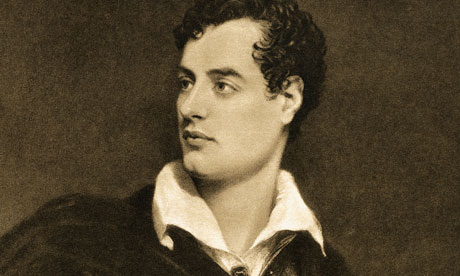I reckon the Aussies publish the world's best cookbooks and leading the way are three book publishers who are hugely impressive in this field. There are others too of course but these guys are the trend setters. I refer of course to
Hardie Grant Books, Lantern and Murdoch Books.
To illustrate my point I am looking today at three books currently on the dining room table, all from Hardie Grant Books.

They are
Four Seasons - A Year of Italian Good by Manuela Darling-Gansser which
I wrote about late last year when it was published.
And then the two that arrived just as I was heading off for the Christmas holidays, both large, spectacular and totally captivating.
MARQUE - a culinary adventure by Mark Best and Pasi Petanen
and
The Complete Asian Cookbook by Charmaine Solomon
MARQUE - a culinary adventure
Way back in 2000 Annie and I were fortunate enough to be warmly recommended this restaurant by some NSW friends so we made a booking (from New Zealand) and bowled along on one of our three nights in Sydney. Even then in its first year of operation bookings were heavy and the only time we could get in was at 6.30pm. A bit early but it was Hobson's Choice. What a wonderful experience it turned out to be even though the location was then in the rather down-at-heel suburb of Surry Hills. There has been much gentrification since!
Mark's wife Valerie was the host and when she found out that one of our main reasons for visiting Sydney was to eat at Marque she sat with us at our table a couple of times and we learned about the opening of the restaurant and how it was going. Then towards the end of our wonderful meal Mark emerged from the kitchen and we had a pleasant chat with him for a few minutes before he was called back.
We have never forgotten that experience and have been back twice in the intervening years although didn't make contact with Valerie or Mark on those visits.We are planning a winter visit to Sydney this year so I'll be calling them in advance to make another booking.
So you can imagine my delight when Mark's cookbook turned up.
Marque is a highly illustrated, contemporary recipe book, celebrating and reflecting on Marque, this highly succesful Sydney restaurant. Also included is the personal journey of chef and owner Mark Best and approximately 80 of Marque's signature recipes. Most are complete dishes but the book also contains a myriad of smaller recipes and techniques which are the backbone of Mark Best's creations. A stunning book to treasure as both a compilation of beautiful recipes and a record of one of the world's best restaurants. And for me a special souvenir.
I should add that Marque is one of only four Australian restaurants to make the coveted top 100 in the San Pellegrino World's Best Restaurant award. RRP $79.99
The Complete Asian Cookbook
Charmaine Solomon - $59.99
This is a completely revised and updated edition of Charmaine Solomon's influential and iconic book of the same title first published 36 years ago back in 1976.And what a handsome new edition it is - a big beauty I would call it.
It covers more than 800 classic and contemporary dishes from fifteen countries - India, Pakistan, Sri Lanka, Indonesia, Malaysia, Singapore, Burma, Thailand, Cambodia, Laos, Vietnam, The Philippines, China, Korea and Japan.
Written with the home cook in mind, Charmaine's recipes are straightforward, simple to follow and work every time. Recipe and chapter introductions give valuable information about how local dishes are prepared and served, while the comprehensive glossary explains unfamiliar ingredients (which are steadily more commonplace in supermarkets today).
The Complete Asian Cookbook is a book that should be in the kitchens of every household.
And here are a couple of recipes from this wonderful book for you to try reproduced here by kind permission of the publisher:
URAP
Cooked vegetables with coconut
Serves: 4–6
½ teaspoon dried shrimp paste
65 g (1 cup) freshly grated coconut or 90 g (1 cup)
desiccated
coconut soaked in 2 tablespoon hot water
1 small onion, finely chopped
½ teaspoon sambal ulek (page 250) or chilli powder
1 teaspoon salt
2 tablespoons lemon juice
250 g (2 cups) sliced green beans
4 carrots, cut into thin strips
230 g (2 cups) fresh bean sprouts, trimmed
½ small cabbage, sliced
1 tinned bamboo shoot, thinly sliced
Wrap the shrimp paste in foil and roast
under a preheated
griller (broiler) for 5 minutes,
turning once. Unwrap the
shrimp paste and place in a bowl along
with the coconut, onion,
sambal ulek, salt and lemon juice,
stirring well to combine.
Put all of the vegetables in a steamer
basket and pour the
coconut mixture over the top, reserving
some to use as a
garnish. Steam the vegetables for 5–8
minutes, then turn
out onto a serving dish and sprinkle
with the reserved
coconut mixture. Use as an
accompaniment or as a salad
in its own right.
KAUKSWE KYAW
Mixed fried noodles with chicken
Serves:
6
500 g egg noodles
125 ml (½ cup) oil
4–5 dried shiitake mushrooms
5 onions, chopped
5 garlic cloves, chopped
500 g chicken breast fillets or
thighs, thinly sliced
1 chicken liver, thinly sliced
1 chicken gizzard, parboiled,
thinly sliced
2 tablespoons light soy sauce
½ cabbage, shredded
¼ white Chinese cabbage (wong
bok), shredded
2 celery sticks, finely chopped
6 spring onions, thinly sliced
4 eggs, lightly beaten
Cook the noodles according
to the packet instructions, then
drain well. Spread the
noodles on a large dish or tray. Pour
2 tablespoons of the oil
over the top and toss gently to coat —
this stops the noodles
sticking to each other.
Soak the mushrooms in hot
water for 20–30 minutes, then
drain, cut off and discard
the stems and thinly slice the caps.
Heat the remaining oil in a
wok or large heavy-based frying
pan over medium heat. Add
the onion and garlic and cook
until soft. Add the chicken
meat, liver and gizzard and stir-fry
until lightly brown on all
sides, then add the soy sauce,
cover, and simmer gently
until the meat is tender. Add the
cabbages, celery, mushroom
and spring onion and continue
to stir-fry until the
vegetables are tender. Remove from the
wok and set aside.
Put the noodles in the wok
and toss gently for 3 minutes,
then remove. In the same
wok, scramble the egg, adding a little
oil if necessary. Season
with salt and freshly ground black
pepper, to taste. When ready
to serve, spread the noodles in a
serving dish, then cover
with the meat and vegetables. Garnish
with the scrambled egg.
Serve hot or cold.
Accolade to publisher:
Hardie Grant I extend my warm thanks and hearty congratulations to you for all the outstanding cookbook publishing you deliver to us. I am proud to have your books on my shelf and to frequently use recipes from them as well as often just reading them for foodie reading pleasure.
I salute you and your chef authors, photographers, designers, editors, stylists, publicists and indeed all the team required to carry out such special publishing.































